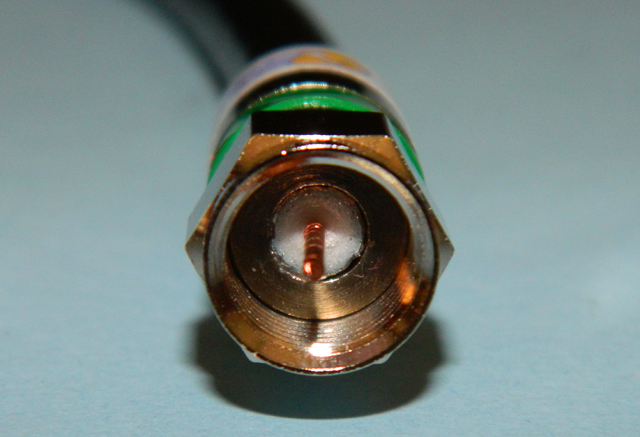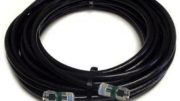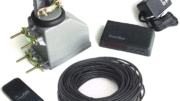One of the Solid Signal staffers asked me recently if RG59 cable was really all that bad. Seems that some other blogs are claiming that if you don’t use RG6 cable, you’re doomed. Friends, I’m here to set the record straight.
Understanding coaxial cables
Coaxial cable is a term used for any cable with an inner conductor and an outer shield, with some sort of special spacer in between. The design of a coaxial cable lets very complex signals travel from point to point while using as little copper as possible. The outer shielding of the cable doesn’t carry signal, but instead acts as a barrier which keeps the signal from “leaking” out over longer distances.
That special spacer, called a dielectric, is really the magic of the coaxial cable. The signal travels across the outer part of the cable and is able to spill over into the dielectric, making more room for much more bandwidth. There are several different grades of coaxial cable, depending on what kind of signals are designed to travel along it. In antenna cables, the most common types are RG6 and RG59. RG59 cable was the standard installation for decades and was replaced in most cases by RG6. RG6 cable is better at carrying internet information as well as high-frequency signals like satellite TV and cell booster signals.
Identifying RG59 cable
RG59 cable looks a lot like the RG6 cable sold today. It’s a standard coaxial cable and the real difference between RG59 and RG6 has to do with the thickness of some of the components that make up the cable. Less copper, less foam, and you’ll get a thinner cable. It may not even look a whole lot thinner. RG59 cable was used in the 1970s and 1980s as people moved away from flat antenna wires and moved to the early cable TV systems. In those days, cables were still much more expensive than they were today and RG59 cable was used because those cable systems didn’t need to carry as many channels as they do today.
It’s hard to know for sure what kind of cable you have, except that most cables do have their specs printed on the side. Also, if the cable is over 20 years old or has a crimped-on connection, it’s probably (although not definitely) RG59.
The real difference
So what’s the big deal with RG59 cable? RG59 cable has more signal loss over a long distance than RG6 cable, but the loss isn’t that great. You’ll lose about 1dB more on a 100 foot run, and that’s practically nothing, it’s about 1/3 of what you’d lose from just splitting the signal once.
Very few places sell RG59 cable anymore. You cant use it for cable and satellite applications. It’s simply not good for those high frequencies that cable and satellite systems need. But for antennas, which only need to receive frequencies up to about 700MHz, it’s no problem at all.
Do you have a home pre-wired with RG59 cable? Many contractors pre-wired homes with RG59 in the late 1990s and early 2000s. It’s perfect for distributing an antenna signal. It won’t work for satellite, though. However, you don’t need to worry at all if you want to get free HDTV throughout your house with an over-the-air antenna.
Need new cables? Get them from Solid Signal
If you choose to add to your existing wiring, shop at Solid Signal! We’re your source for the best, highest quality cables. If you need help choosing a cable, call us at 888-233-7563 during East Coast business hours. If it’s after hours, fill out the form below and we’ll get back to you, usually within one business day.





